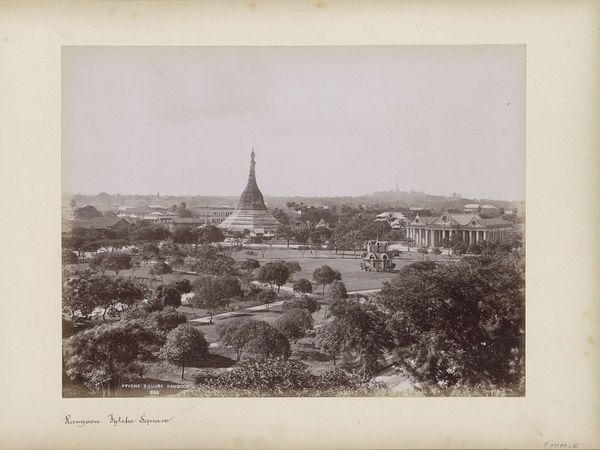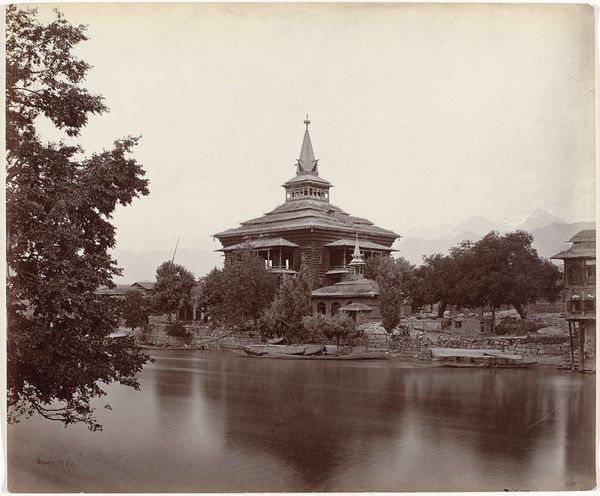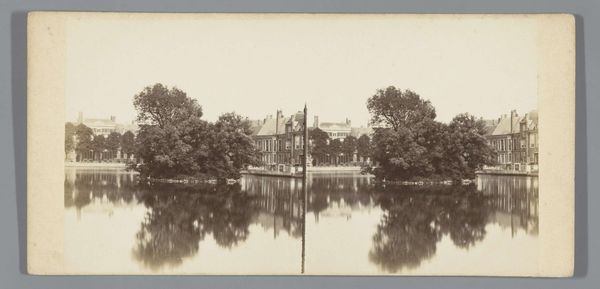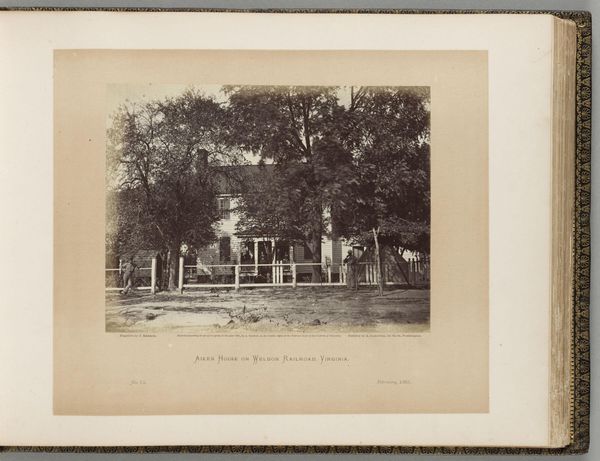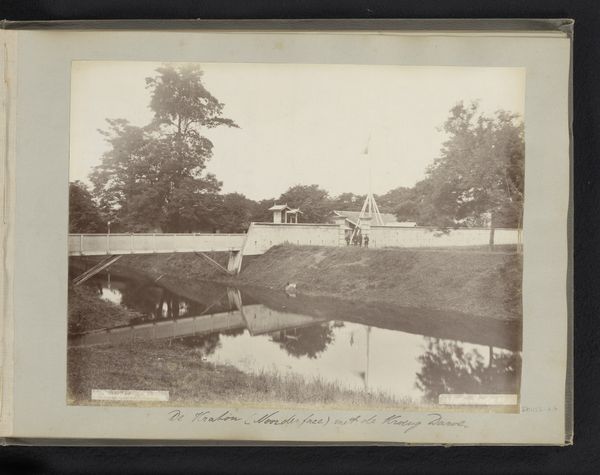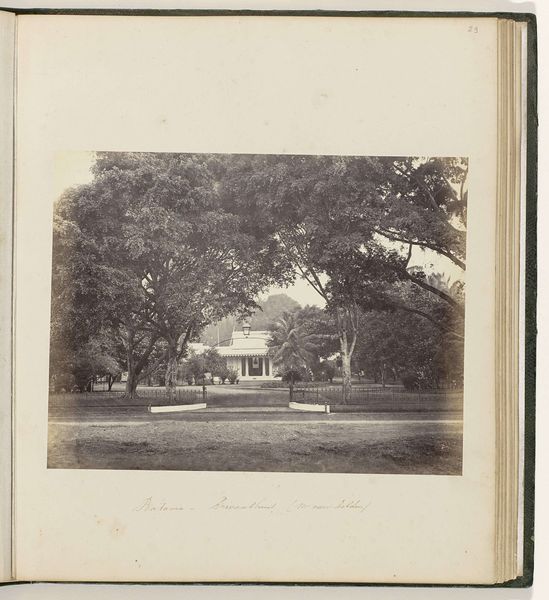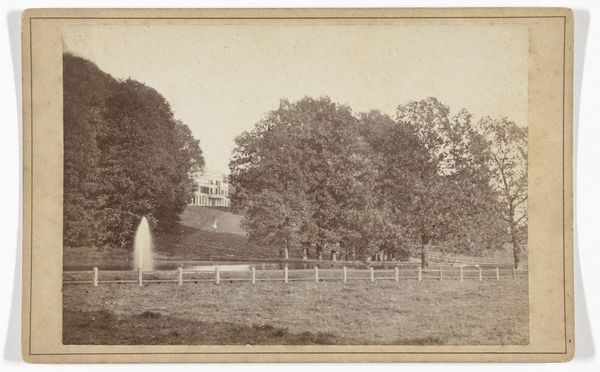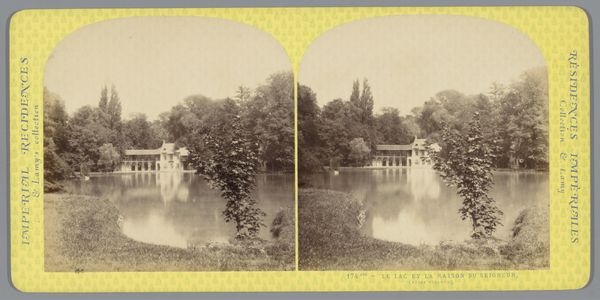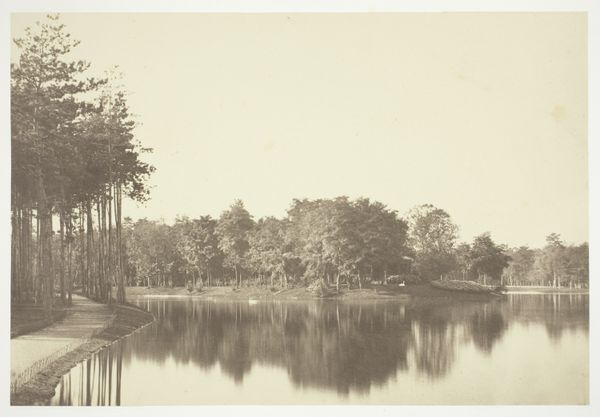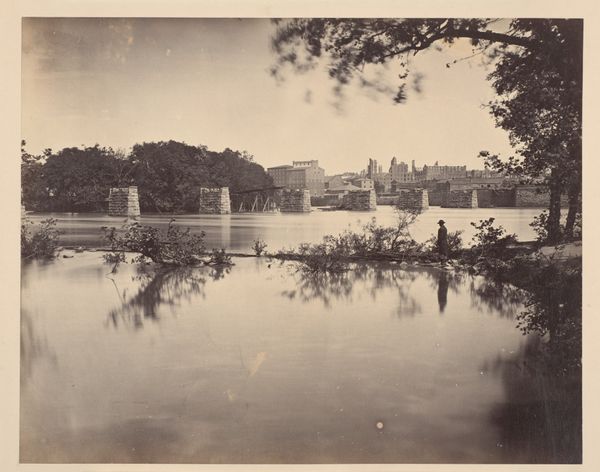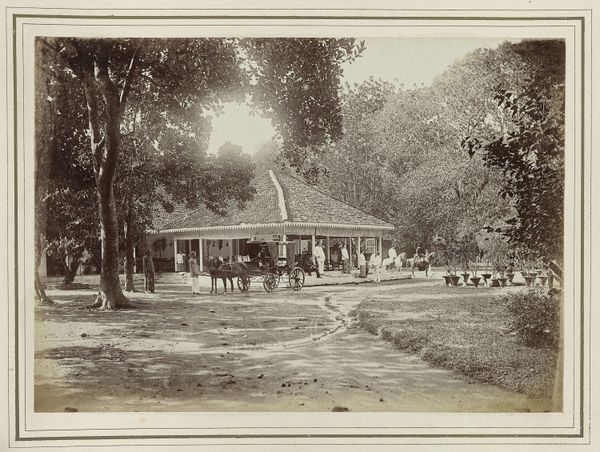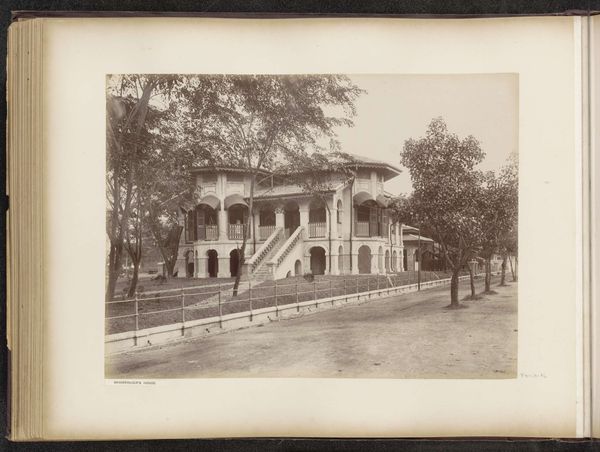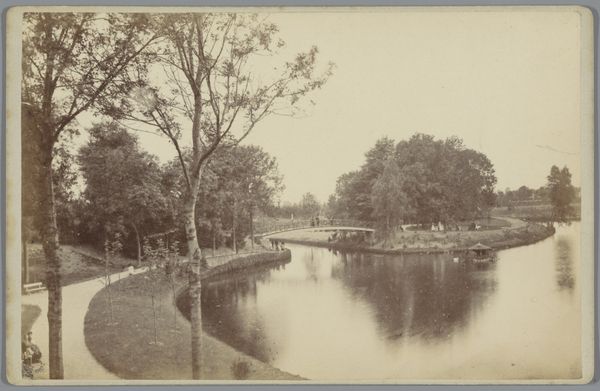
Gezicht op Cantonment Gardens in Rangoon met aan de horizon de Schwedagonpagode c. 1885 - 1886
photography
still-life-photography
landscape
photography
orientalism
Dimensions: height 206 mm, width 273 mm
Copyright: Rijks Museum: Open Domain
Curator: This photograph, dating from around 1885 or 1886, offers a fascinating glimpse into colonial Burma. It’s titled “Gezicht op Cantonment Gardens in Rangoon met aan de horizon de Schwedagonpagode,” and it's attributed to P. Klier. Editor: It evokes such tranquility, despite its muted tones. The white bridge and pavilion create a feeling of order, while the Schwedagon pagoda rises serenely in the distance, grounding the scene in something more profound. Curator: The Cantonment Gardens were a very specific product of British colonial administration. They were meant to provide leisure spaces for European officials and their families, segregated from the local population. Photography at the time often functioned as a way to document and, perhaps, legitimize colonial presence. Editor: That's certainly part of the picture. But look at the prominence given to the pagoda, its spire piercing the sky. This is a clear visual marker, representing the deep-seated spirituality of the region. The bridge mirroring in the water emphasizes how culture, and power structures are always two sided reflections, like the image of the colonizers reflected on the waters, while being towered by local spirituality. Curator: I see your point about the pagoda, but its distance is strategic. By positioning it in the background, Klier creates a visual hierarchy that places the colonial gardens, the bridge of the establishment at the foreground of social life. Editor: Even so, consider how potent that image is. Pagodas serve not just as symbols, but as living temples; containers of community and devotion. I sense there's a powerful story embedded within it, maybe even defiance of power that silently resist the colonizer, even though unseen. Curator: It is easy to read into these photographs; but it's crucial to consider the social function these images were playing during the height of the imperial ambitions. This shot has many other counterparts with similar compositions, serving the administration's image control. Editor: Indeed, context matters profoundly here, and colonial control is certainly imprinted across every image. But symbols, like echoes, resonate across time. They whisper subtle narratives regardless of their conscious intention. Thank you, this made the analysis so rewarding. Curator: You're right; those layers of meanings offer such fascinating material for conversation. I must study further the semiotics in the pagoda image.
Comments
No comments
Be the first to comment and join the conversation on the ultimate creative platform.
